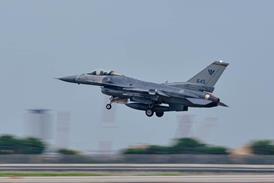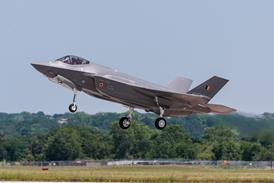GRAHAM WARWICK / WASHINGTON DC
Questionmark over full rate production after half of missiles fail to launch or miss target
Planned operational testing of the Patriot Advanced Capability 3 (PAC-3) has concluded with four partial successes in four tests, casting doubt on whether the US Army will win approval later this year for full-rate production of the anti-tactical ballistic missile (TBM) system.
A Lockheed Martin PAC-3 missile hit the intended target on its fourth operational test, on 30 May, but a second missile failed to launch. The test, at the Kwajalein range in the Pacific, was to involve the ripple firing of two of the hit-to-kill missiles against a target simulating a two-stage ballistic missile with a separating re-entry vehicle.
The test was planned to demonstrate the system's ability to classify the high-velocity, low-signature target as a TBM, discriminate between the re-entry vehicle and debris and destroy the target. The US Army says the first PAC-3 intercepted and appeared to destroy the re-entry vehicle. Why the second launch failed is being investigated.
On the first operational test, in February, a PAC-3 missed a subscale drone configured as a cruise missile, because of an inaccurate cue from the ground. Two Raytheon PAC-2 missiles were fired at the same time: one hit a QF-4 full-scale target aircraft while the other missed the subscale drone. On the second test, in March, a PAC-3 intercepted and destroyed a Hera TBM target, but the second missile in the ripple firing failed to launch when the launcher lost power. A PAC-2 fired at the same time hit its intended target, a subscale drone.
On the third operational test, in April, one PAC-3 failed to launch against a Storm II TBM target while the second hit a Patriot missile acting as a target, but failed to destroy the warhead. Preliminary analysis indicates the missile seeker experienced a reset during transition to internal power and was not ready to fire when the command came.
Before entering operational testing, the PAC-3 had missed only one ballistic-missile target in six flight tests. The missile is in low-rate initial production and entered service with the US Army in September last year. The PAC-3 is also planned for the US/German/Italian Medium Extended Air Defence System, due to begin replacing Patriot around 2012.
Whereas Patriot reserves the expensive PAC-3 for high-value ballistic missile targets, MEADS will use the interceptor against all threats. As a result, Germany is studying the option of adding a second, low-cost missile type to the system, for use against low-performance targets such as unmanned air vehicles.
Weapons studied include ground-launched versions of air-to-air missiles, such as Europe's infrared-guided short-range IRIS-T and radar-guided medium-range Meteor.
Source: Flight International




















